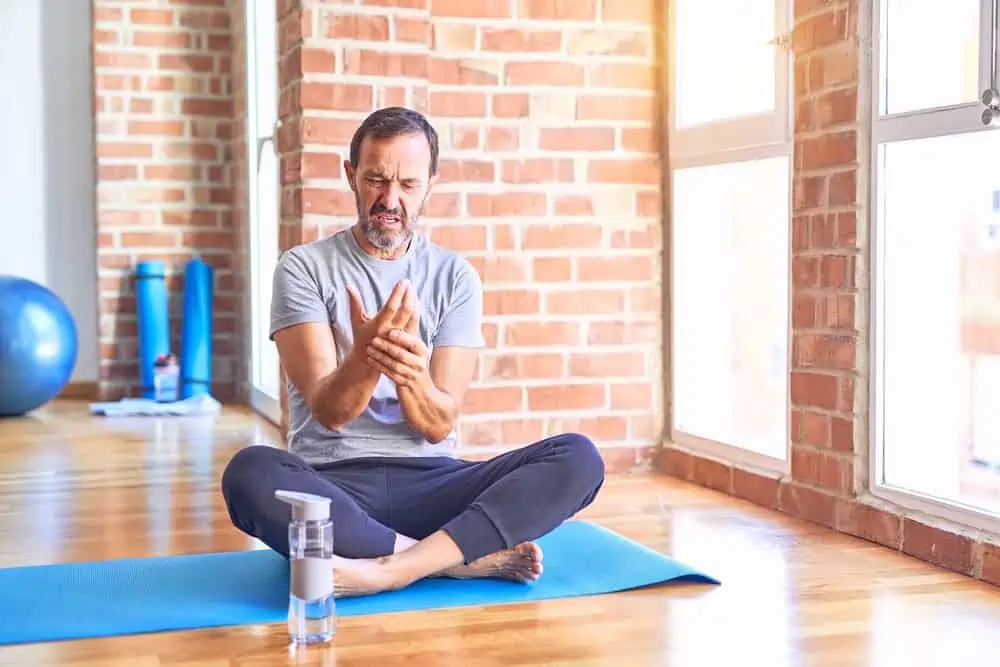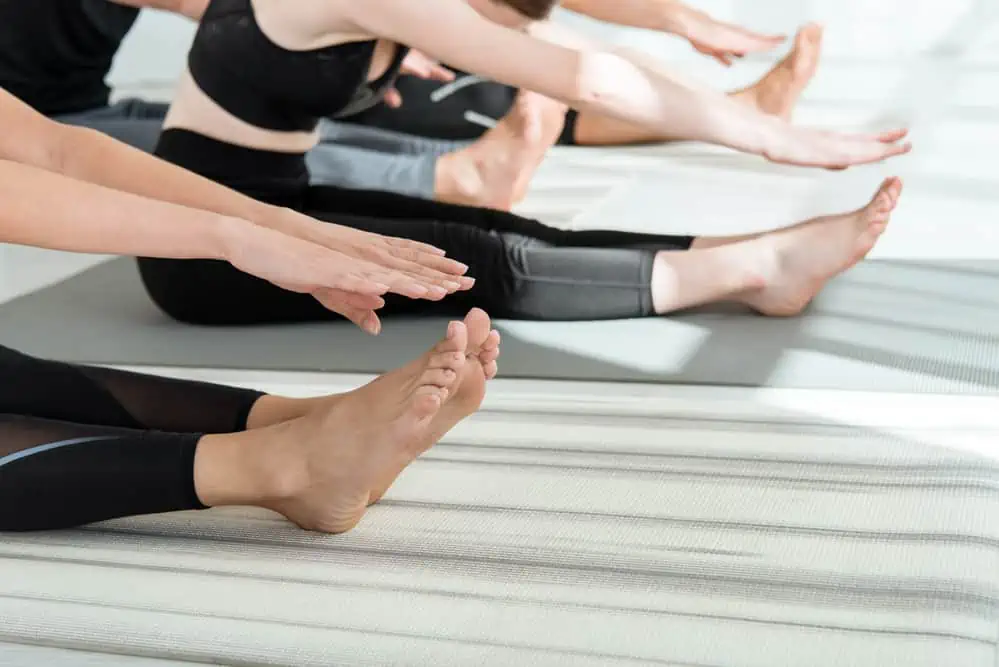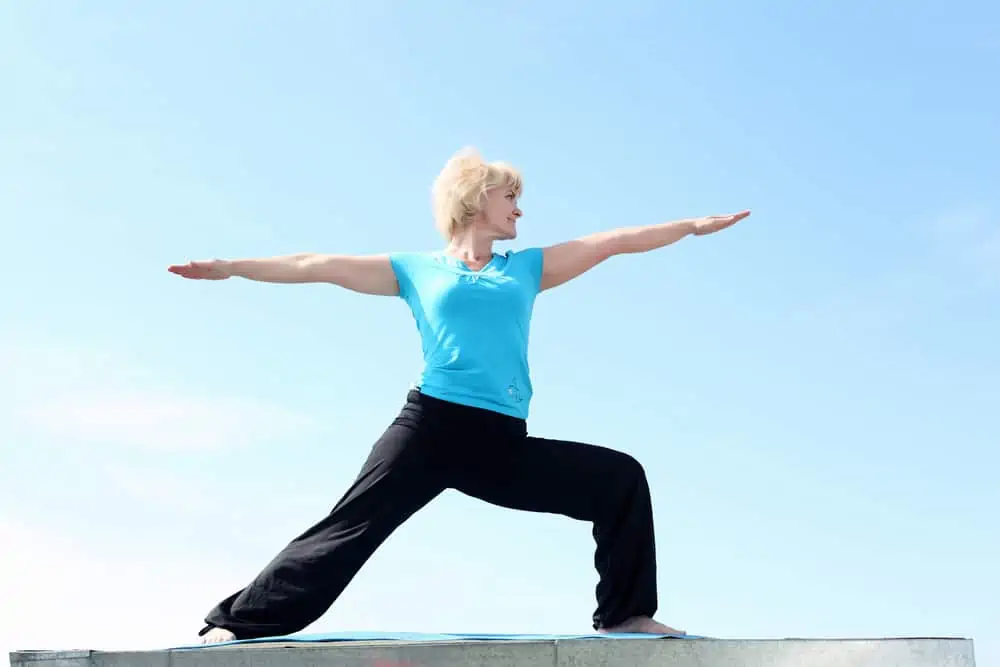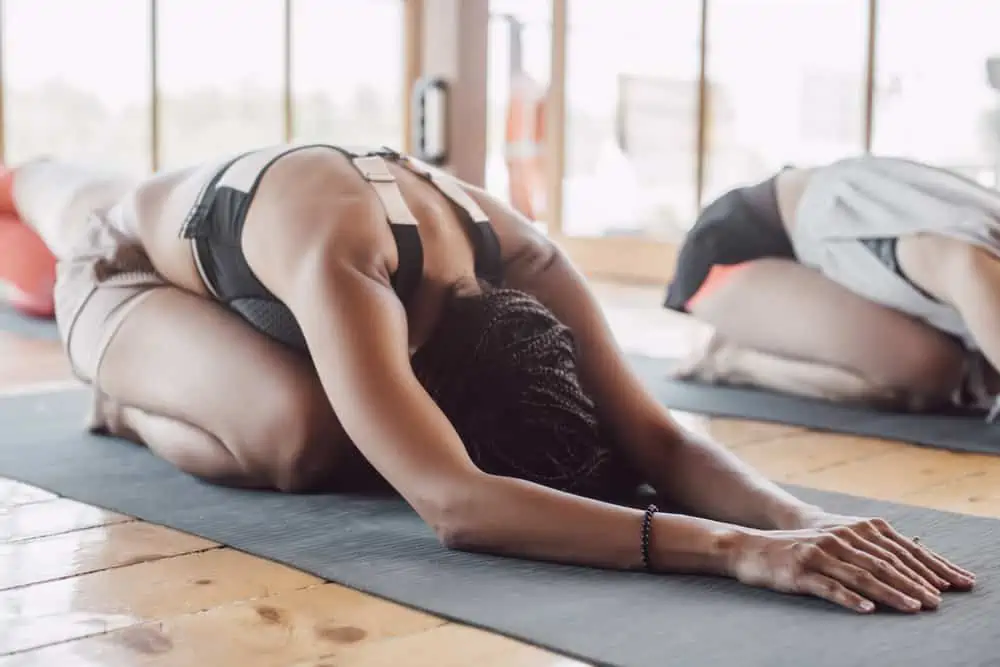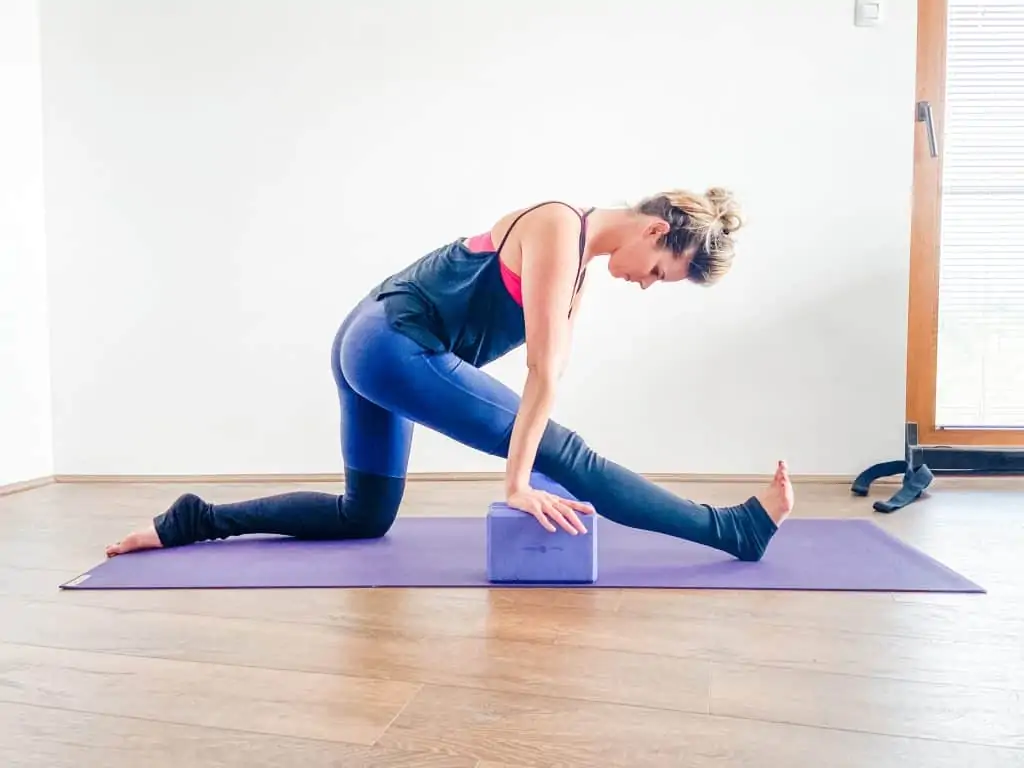This page contains affiliate links. I’m part of the lululemon collective and will receive a commission if you make a purchase through the links below. As an Amazon Associate, I earn from qualifying purchases. Read the full disclosure here.
Wrist pain can be a barrier to enjoying your yoga practice.
Whether it’s joint pain, tendonitis, arthritis, carpal tunnel syndrome, or other repetitive stress injuries there are plenty of ways to keep doing yoga with some accessible tweaks.
This article is jam-packed with easy ways to stay on your mat and avoid aggravating your wrists.
Let’s get to it!
Disclaimer: This content is for educational purposes and is not medical advice. Read the full disclaimer.
Distribute more weight through your fingers
With any yoga pose that requires weight-bearing through the hands, for example, in tabletop or downward dog, it’s a common mistake to place all the strain directly through the wrist joint.
Instead, try pressing the knuckles and fingers down and activating the arch of the palm to distribute weight more evenly.
This is called hasta bandha or “hand-lock” and is one of several locks throughout the body. The purpose of engaging these locks is to form a solid base and properly transfer energy through the body.
Physically, this helps protect the wrists and improve movement patterns. Energetically, engaging various locks in the body traditionally helps connect your practice to deeper, more subtle layers of energy.
Check out the quick video below to learn how to use hasta bandha.
How to engage the hand-lock:
- Place your hands on the mat with the fingers spread wide
- Observe the areas of your hand that have contact with the mat
- As you bring some weight into your hands, press the knuckles down (especially the thumb and index finger) to the floor and a light pressure through the fingertips
- You should notice that the palm has become arched and is slightly lifted from the mat
You may feel like your forearm muscles have to work harder, but with time, strength will improve, and mastering the hand lock will get easier.
Make a fist
This may not work for everyone and is challenging in its own way. But it may provide some temporary relief during poses such as tabletop, allowing the wrist to remain neutral.
Make a tight fist with the thumbs on the outside and place the knuckles down on your mat.
This maintains a neutral position and may relieve carpal tunnel discomfort and places strain through the knuckles.
Use this variation sparingly to avoid developing additional issues.
Use your forearms
The forearms can provide an alternative surface for weight-bearing in poses like tabletop, downward facing dog, or plank, to prevent wrist pain.
To create more space, build the floor up to you with blocks, bolsters, or blankets to add variety to your poses without compromising on wrist pain.
In certain poses, like dolphin, you may notice your shoulders and upper back muscles working much harder while on your forearms.
Engage larger muscle groups
When weight-bearing through your hands, be sure to engage larger muscle groups like your core, scapular stabilizing muscles, and shoulders.
This helps you not sink all of your weight into your wrists.
Listen for cues from the instructor to optimize alignment throughout the body.
Adding strengthening off the mat for larger muscle groups can also help ease wrist pain during yoga as well as improve general strength and enhance your practice.
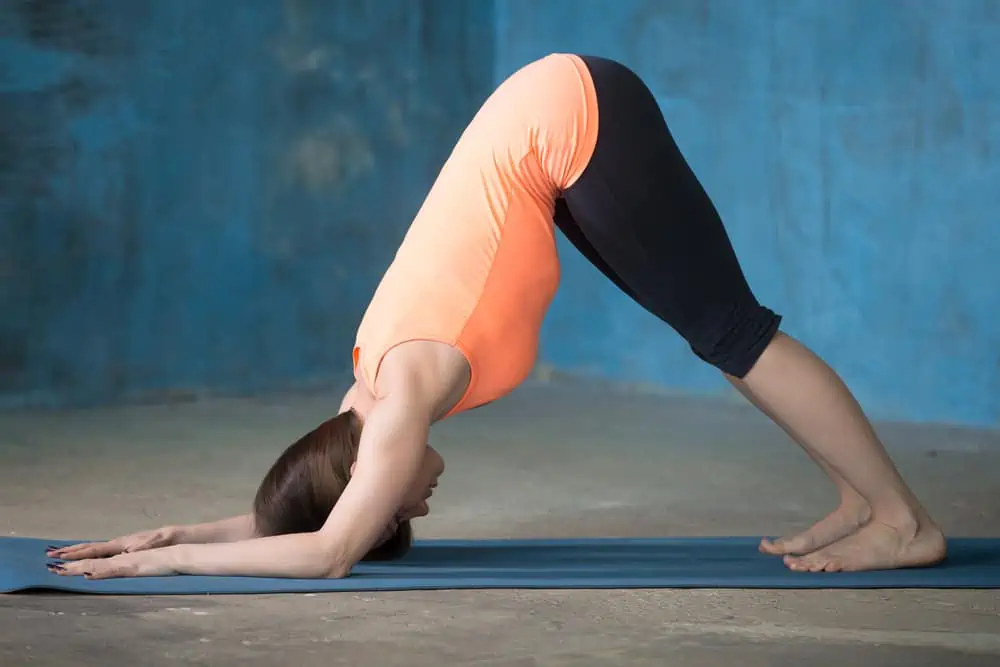
Look for hands-free or “no downward dog” practices
You’d be surprised at how many poses you can do without weight bearing through your wrists.
Sure, you might have to pass on the Vinyasas, but there’s plenty to keep you moving and pain-free.
Try my hands-free yoga practice on YouTube and see how easy it can be.
Stack two mats
Try using two mats to get double the cushioning.
If cushioning is a priority for you, shop for yoga mats that are 5-6mm thick to maximize comfort. My favorite mats for cushioning are the Manduka Pro, B mat strong, and Jade harmony.
All of these options have good quality dense cushioning to make you feel supported instead of sinking down to the floor.
Read more about why I love these mats in this in-depth article.
Try a soft block
Blocks come in different densities and some materials can feel more comfortable than others.
Cork is very firm, but a softer foam can be more forgiving.
Not only does soft foam decrease stress on the joints and tissues, but allowing your fingers to flex around the block and decrease pressure. Blocks are also useful if you lack full range of motion at the wrist.
For lightweight, soft foam blocks, try this Clever Yoga block set.
You can also try ergonomic style blocks like the Manduka Unblock or the Wrist Buddy Yoga Block.
The curved surfaces may provide a more comfortable angle than traditionally shaped blocks.
Use a cushion
Knee cushions aren’t just for knees. They can help with wrist support or elbows as well.
Check out this article on my top knee cushions for cranky joints to get some ideas.
Yoga blankets also work well like this yoga blanket from Amazon. They can be folded or rolled into various shapes to help cushion and support areas during your practice.
YogaPaws are another option featuring a glove that covers the palm and provides a cushion and a non-slip surface. Plus, you don’t have to worry about shuffling props around because these gloves move with you.
Try a wrist wedge
If you lack full range of motion in your wrists, a yoga wedge may make poses more comfortable.
A wrist wedge is a small piece of foam that looks like a tiny ramp.
Provides firm support at an angle to decrease the amount of wrist extension required to weight bear through the hands.
I like these soft foam wedge blocks because you can use them individually or stack them together to make one large foam support.

Try a chair practice
Chair yoga is another alternative when you’re dealing with a wrist injury or trying to stay off of your upper body altogether.
Check out the practice below to see how much you can get accomplished from a chair.
Try gentle forms of yoga
Yoga isn’t just the fancy poses you see. If a wrist injury has you sidelined, you don’t need to abandon your practice.
Try different forms of yoga and reap some other benefits. Some styles include yin, restorative, and yoga nidra.
Read about the differences between these three styles in this article.
Wrapping up
Wrist pain doesn’t mean abandoning your yoga practice.
Try these variations and accessible props at your next yoga class to adapt your practice into something comfortable for you.
What are your favorite variations to work around wrist pain in yoga?

